Growing your own food has tons of health and financial benefits. You save money and a trip to the grocery store just by having a home garden. Having a garden is a way to ensure you are eating the freshest produce possible. Knowing how to store your freshly picked produce is crucial to its lastability. Some foods run the risk of spoiling the other foods around them if not stored properly.
When harvesting your beautiful bounty, it is important to know how to keep that food fresh for as long as you can. This also reduces your food waste in the long run. Statistically, Americans throw away 1 pound of food per person each day. That’s a lot of food waste.
Many fruits, such as tomatoes and bananas, produce ethylene gas, a ripening agent that influences the ripening of other fruits and vegetables around them.
Related: How to Keep Moisture and Pests Away from Your Food Stockpile
Here are the fruits and vegetables that you should store away from one another:
Cucumbers and Other Vegetables
 Despite popular belief, cucumbers are best stored out on the counter. Oftentimes, they are stored in one of your crisper drawers in the fridge.
Despite popular belief, cucumbers are best stored out on the counter. Oftentimes, they are stored in one of your crisper drawers in the fridge.
However, when cucumbers are stored next to other fruits in a drawer, they will spoil more quickly due to ethylene gas omitted from the fruit. Cucumbers are extremely sensitive to ethylene gas.
If you prefer cold cucumbers to room temperature ones, store your cucumber in the fridge for just a few days, far away from any other fruit or vegetable.
Squash and Apples
 Some varieties of squash can last up to 6 months when stored at room temperature. It is an awesome vegetable to have in your garden because of it’s lastability. However, squash cannot be stored next to the other fall favorite, apples.
Some varieties of squash can last up to 6 months when stored at room temperature. It is an awesome vegetable to have in your garden because of it’s lastability. However, squash cannot be stored next to the other fall favorite, apples.
Apples cause squash to yellow and spoil when stored too close. Pears and other ripening fruit are not ideally stored next to squash, either. Store squash in an open wicker basket with lots of ventilation, away from apples and pears.
Onions and Potatoes
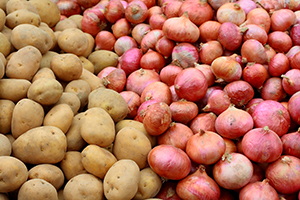 While both onions and potatoes taste delicious together, they should not be stored together.
While both onions and potatoes taste delicious together, they should not be stored together.
Onions cause potatoes to soften and spoil. Potatoes are best kept in a similar fashion as squash; a wicker basket in an open, ventilated area. You can even store your potatoes with squash! Onions can be kept separately at room temperature. A good friend of onions is garlic. Garlic and onions can be stored together at room temperature with no ill side effects.
Fresh Herbs
 Treat fresh herbs like flowers in a vase. Once harvested, rinse and thoroughly dry your herbs, leaving the stems and roots as intact as possible.
Treat fresh herbs like flowers in a vase. Once harvested, rinse and thoroughly dry your herbs, leaving the stems and roots as intact as possible.
Be sure the leaves are dry so they do not become soggy. In a cup, mason jar, or vase, place your herb bouquet stem-side down and fill your cup with water. Be sure all stems are submerged.
Store each individual herb that you have in a separate glass, do not put different herbs next to each other. Herbs can stay fresh for about two weeks on the counter this way.
Related: 15 Best Herbs for Your Prepper Garden
Bananas and Apples
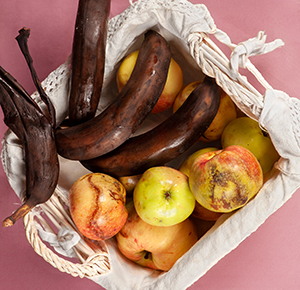 Have you ever bought a big bunch of bananas, only to eat a few before the rest of them go bad? You are either eating all your bananas at once, or throwing them away after they ripen too much, too quickly. By separating your banana bunch, you can keep the whole bunch fresh for much longer.
Have you ever bought a big bunch of bananas, only to eat a few before the rest of them go bad? You are either eating all your bananas at once, or throwing them away after they ripen too much, too quickly. By separating your banana bunch, you can keep the whole bunch fresh for much longer.
Keep some bananas out on the counter, and the rest in the fridge. You can eat a banana one day, and a few days later still have a similarly ripened banana.
Bananas can sometimes be referred to as the “killer fruit”, in that they emit so much ethylene, that they “kill”, or ripen, any fruit or vegetable nearby. This is also why they are stored away from all other produce in the grocery store. Keep your bananas away from your apples, oranges, potatoes, squash, or anything else stored on your counter.
In a similar fashion, unripe avocados can be kept next to bananas in the fruit bowl. The bananas will promote ripening in the avocado. Since avocados can be expensive, it is best to enjoy them when they are perfectly ripe.
Root Vegetables and Onions
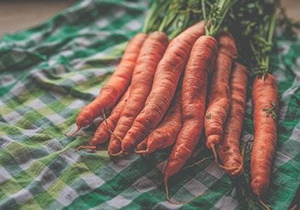 Root vegetables are some of the most nutrient-rich foods on earth, due to absorption of nutrients directly from the soil they grew in. In order to keep root veggies fresh, you will want to store them in a cool, dark place.
Root vegetables are some of the most nutrient-rich foods on earth, due to absorption of nutrients directly from the soil they grew in. In order to keep root veggies fresh, you will want to store them in a cool, dark place.
If you have a root cellar, that would be the perfect environment for these vegetables. Since that is not feasible for everyone, storing them in a paper bag creates a similar environment and keeps your vegetables fresh and nutrient dense.
Bag each variety separately and store in your coolest, most dark area of your house. The separation will organize your root veggies and keep them fresh. Do not store near onions, as the root veggies can rot due to onions being nearby. Do not wash any of the variety’s roots, as they will rot faster. Simply shake off excess dirt from the roots. Label each paper bag for easy usage.
Related: How To Make A Mini Root Cellar In Your Backyard In Less Than Two Hours
Strawberries and Peaches
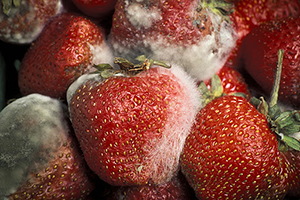 Strawberries have a lot of nooks and crannies for mold to develop. Be sure to only wash your berries as you are ready to eat them, and not before.
Strawberries have a lot of nooks and crannies for mold to develop. Be sure to only wash your berries as you are ready to eat them, and not before.
One way to combat mold growth after washing is by mixing three parts water to one-part plain vinegar. Submerge your strawberries in this solution briefly before draining and rinsing carefully.
The vinegar solution will help stop mold from forming inside those nooks and crannies. Dry your berries completely on paper towels or inside your salad spinner. Store in a ventilated container.
Strawberries are affected by ethylene, contrary to popular belief. If storing strawberries, be sure to store away from ethylene-producing fruits such as bananas or peaches.
Apples and Oranges
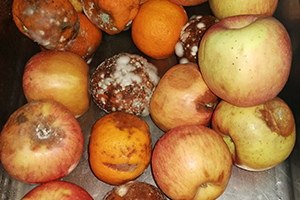 The classic fruit bowl image has some flaws in it. The main flaw is that apples and oranges should never be stored together in the same place. Both fruits emit ethylene, causing one another to spoil.
The classic fruit bowl image has some flaws in it. The main flaw is that apples and oranges should never be stored together in the same place. Both fruits emit ethylene, causing one another to spoil.
It is perfectly safe to keep your apples and oranges in the fridge, but be sure that they are away from each other. Oranges should be stored in a mesh bag that is breathable. They will mold quickly if stored without access to oxygen.
Tomatoes and Garlic
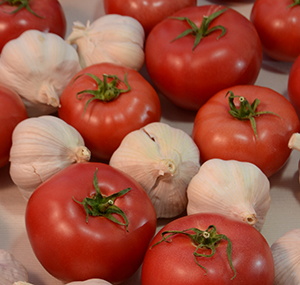 Tomatoes should never be stored in the fridge. Storing a tomato in the fridge causes the tomato to become mushy and tasteless. The unique sweetness and texture of a fresh tomato from the garden will flourish when stored at room temperature.
Tomatoes should never be stored in the fridge. Storing a tomato in the fridge causes the tomato to become mushy and tasteless. The unique sweetness and texture of a fresh tomato from the garden will flourish when stored at room temperature.
Tomatoes are a fruit that also emit high levels of ethylene gas. Onions, garlic, apples, bananas, and other foods kept out on the counter should be stored away from tomatoes. To avoid ripening too quickly and rotting.
Carrots, Asparagus and Celery
 All three of these veggies are very popular in home gardens. They all can be stored in similar ways. Carrots, asparagus, and celery all love water, and thrive in wet environments.
All three of these veggies are very popular in home gardens. They all can be stored in similar ways. Carrots, asparagus, and celery all love water, and thrive in wet environments.
The best way to preserve them is to cut them into sticks, and submerge them completely in water. Place them in a tall glass of water with at least 1 inch of water covering them. Do not store the vegetables together in the same water container. Have different water storage for each variety.
Once all veggies are submerged, they can go in the refrigerator. This method allows the vegetables to stay crisp and fresh for much longer. Storing in plastic would give the ethylene nowhere to go and cause mold. You can also wrap your fresh carrots, asparagus, and celery tightly in foil and store in the fridge.
Related: The 24 Highest Calorie Vegetables for Your Survival Garden
Fresh Corn and Pumpkin
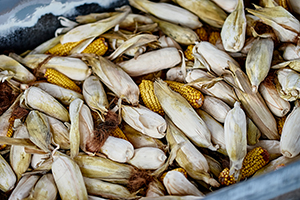 There is nothing like fresh corn picked straight from the plant. You want to keep those kernels plump and juicy. To do that, you will need to keep the husk on the corn when storing. Store your husk-on corn in the front of the fridge, where it is slightly warmer.
There is nothing like fresh corn picked straight from the plant. You want to keep those kernels plump and juicy. To do that, you will need to keep the husk on the corn when storing. Store your husk-on corn in the front of the fridge, where it is slightly warmer.
Do not store for more than a few days. Environments that are too cold will dry out the corn.
You will also want to store your corn away from other produce, shucked or not. Corn is susceptible to rotting due to ethylene gas, so store away from strawberries, onions, potatoes, and bananas.
It is so important to diligently research proper food storage, especially when harvesting from your own home garden. Different foods have different storage instructions, so check to see what storage methods you will need for your garden.
Knowing how to store each fruit and vegetable properly will keep your harvest fresh for a long time. Also keeping moisture and pests away from your food stock is crucial to its sustainability.
What food storage tips and tricks have you discovered over the years?
You may also like:
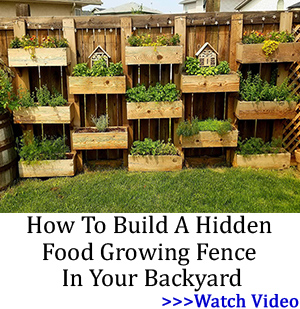 18 Plants That Should Never Be Planted Together
18 Plants That Should Never Be Planted Together
If You See This Plant in Your Backyard, Burn It Immediately! (Video)

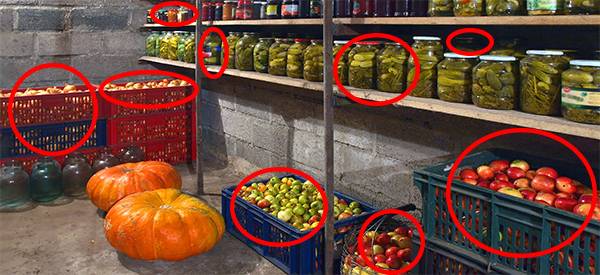













Good information to know and pass on! niio
Several years ago I started to use a product called BluApple in my refrigerator and pantry fruit and vegetable bins! It absorbs ethylene gas which causes everything to over ripen. I still am careful what I put next to what, but everything lasts much longer, including fresh berries. I just get the refill packets. You don’t really need the little Blue Apple.
CC: We will look into it, but I just hope one of the munchkins doesn’t try to eat them while grazing thru the fridge, ha! 🙂 niio
A good reminder!
Great information. Thank you.
Lots of good info…I don’t know that I have enough separate storage compartments to store all of the items separately from one another though. I do like the tip about bananas causing avocados to ripen – I never thought of that, we are always putting avocadoes into paper sacks to ripen, I will have to try just putting them next to the bananas. –Another point, I don’t know about the celery, but asparagus doesn’t have to be totally immersed in water: just stand the bunch upright in a small dish of water in the fridge (I use a plastic container about 3″ deep and 3″ across). I have been doing this for years, & it definitely greatly extends the shelf life of the asparagus. From what the article above says, I guess I will try that with cilantro as well, mine always goes bad way too fast, but I hadn’t tried sticking them in water.
Eggplant aren’t mentioned – does anyone know a good way to keep those from going bad? I love eggplant, but lots of times it starts getting brown spots on it before I have a chance to roast it.
spicelady! Long time no see. I hope all is well.
Only way I found to keep eggplant is cook and freeze. It might get watery, but drains.
Cilantro? If you live in the southwest, next month is planting time. Up north, spring. It likes cool weather. It can be grown in a container in good soil–crowding a little is OK. Sunny winter window is best, but not a lot of heat. Pick off leaves as you need them or take those bunches from the store and freeze them whole. Just cut off what you need. If the bag is more or less airtight, the leaves keep their flavor.
If you like corianders, the plants will bloom in late season, when it gets warm. It’s related to parsley and carrots and likes the same weather. niio
I’m in Tennessee, not the southwest; warm, but definitely a lot more rain here. I did grow a bit of cilantro here this here, it bolted fairly quickly and went to seed, but at least I collected the seeds. I’ve never had much luck growing cilantro; but parsley, that I’ve kept growing for years with no problem.
spicelady: Here, cilantro is a winter crop. It won’t go in till near Thanksgiving. it can get down in the mid-20s, and it breezes thru that. We cut it off above the crown to freeze in bundles. One or two cuttings, then let it go to seed. You can’t make good corned beef or hotdogs without coriander! 🙂 Epaozote taste much the same in food, and kills bean gas, too.
Parsley burns up in the heat. That gets planted in the carrots, and is harvested with them. Hamburger Root is like parsnips.
Peas will go in soon, when the black radishes (AKA German horseradish) and winter rye are up. I can’t find winter carrots. Baker’s Creek carries Kyoto but it’s out of stock.
BTW, some types of local sorghum are winter hardy. While I like it, it can carry dwarf maize mosaic. We lost sweet corn 2 years running even after it was all dug out. niio
Chances are pretty good that marauding hordes leaving the big city, won’t know what a root vegetable is out in the field or recognize one planted around in the garden. Remember reading somewhere that in Poland during WWII, the only food left around was that which was still buried out in the fields.
CC: yeah, but this isn’t the rest of the world where they sneer at peasants. NYC teaches kids about agriculture. a lot of people in cities came from aggie backgrounds. Most cities encourage gardening and assign a free plot and have classes for it. that’s a two-fold good for the city. It keeps abandoned lots from being overgrown with weeks and rats, and helps people feed themselves. Aquaponics is big, as well. How many in NYC have chickens? I hear there’s more goats in the city now than people. Cousins farming hours from the city get thousands of people who come to pick their own veggies, even potatoes. niio
Red- They have only started to do this the last ten years or so. Here in the city, Hydroponics, and rooftop gardens and beehives have been booming thanks to the demands of restaurant chefs and gourmets. In the outer boroughs, open green space have become community gardens and farm space and home kitchen gardens have expanded to both front and back yards. Fruit trees are planted just about everywhere. Virtual Garden of Eden around here in Queens.
CC: In the 70s, the Bronx was where people forced the electric supplier to allow people to make their own electricity and put the excess in the grid. the judge then ordered the supplier to pay for it. NYC is usually on the cutting edge of prepping for town people.
Aquaponics is the organic version of hydroponics.
One stepdaughter is married to a Sunni, a rabidly pro-American 🙂 He loves New York, and they lived in Brooklyn for years. Gardens everywhere! their neighbors with chickens share manure with those who don’t have animals to make fertilizer or raise redworms. When I used to go, a city of neighborhoods. for that matter, it was the friendliest place I ever lived (temporary resident, stayed with family). niio
Boy, I know it’s been years since I’ve been to NYC, but this I gotta see….more goats than people??
Now here in Tennessee, I do see a lot of goats…but still wouldn’t say they outnumber the people. Cattle, yes; lots more cattle than goats here, possibly more than people but not certain.
Spice Lady: More joke than real, but wow, goats are everywhere. NYC is full of people from the Caribbean and central America, North Africans and Asians, and most of them can’t drink cow’s milk, and goat costs more for a quart than a gallon of cow’s. Yes, there’s flocks of goats in NYC, not just individual ‘pets’ kept for milk or meat. On chickens, there’s no limit on how many hens you can have in your apartment. We used to visit the stepdaughter a lot in Brooklyn.
Arizona, more goats than people, more cattle.
New Yorkers are prepping, and it’s not just gucci bugout bags from Manhattan. niio
In Albuquerque, my nearest big city, many folks are gardening, keeping bees, and have chickens including one rooster, unless your in an area rulled and regulated by covenants or an association. Around the edges of the city are larger plots of land where owners have horses, goats, sheep, chickens, turkeys, and some even raise a steer or two. In town I see edibles growing next to sidewalks, in flowerbeds, in vacant lots, and in containers on balconies. Pretty much anywhere someone can grow food.
ClergyLady: Good day! That’s something people love about American Indian gardens, women owned them and it had to be tasty and pretty. We need to see about old varieties of dahlia from Mexico. It’s a yacon and the roots are all starch. With fall here and day highs in the 90s, not 100s, we can start to plant more. Winter rye and black radishes are going in now. niio
Late yesterday evening, I saw a bat. No, not usual for here. Even freetails need more moisture than they get here. Someone, a rancher, most likely, put up water tanks and housing for them.
Many places had freezes last night. My area included but my tomatoes and peppers didn’t freeze so I’m happy. 8% humidity today.
ClergyLady: It’ll be light out in an hour. It’s 64 F, no wind, thank God. With the drop in temps, everything is getting its monsoon spurt, tho it hasn’t rained in weeks. we’re inches below normal. Even the cactus need a drink now and then. Sunchokes are blooming like fury, making more roots.
2 more patches to cage from the birds on one side of the yard and 4 on the other. Outside the fence, donno. But, the lemon tree decided to put on leaves. It needs to be moved from the sheltered place and exposed to wind and sun.
Next chance of rain is in 3 weeks. 1st chance of frost is close to Thanksgiving. No beans this year, no tomatoes, and only some chilis. Birds wrecked it all, even eating green fruit off the citrus. If not for that trip to PA, we would have had nothing to can.
niio
It’s been weeks since we saw rain. Some was forecast but never came. Inches below normal and normal is an annual 12″
I managed to move the recliner inside. You’d have laughed. Open tail gate, pull on it till it slid forward, not too genttly dropped it on a cart, pulled the cart to the front steps, slid it off the cart and turned the cart around and load up again. LaId 2. 2x4s up the steps with a fluffy throw on to cover the splintery wood. Pushed the cart up to the boards and laid the recliner bacside down on them. Took the cart away. Pushed the recliner up the boards till it lay in the porch. Pulled out the 2x4s. Stood it up. Got the old chair out of the livingroom and carried it off the porch. Pushed the recliner to the open door. Had Bill lift the front legs over the thresshold. Pushed and turned till I got the recliner where I wanted it. Sat down to rest a bit while every cat came in the front door to check out the kitchen, dog food dish, and annoyed me. 20 minutes Iater I grabbed a scoop of dry cat food and dumped it in their dish on the porch and they all arrogantly filed out looking rather pleased with themselves.
ClergyLady: Next time, put that chickens to work. Hitch them up and scatter scratch grain. Maybe those moochers! Hitch up the cats, and crack the whip. But, not too hard, you don’t want to lose the hogdog on the end. Hey, if some Cesar in Rome could have a chariot bulled by a team of lions…! Glad to see you back here and getting better.
niio
What happened? I was getting emails almost every day form Ask a Prepper, now nothing. really miss it, I should still be a subscriber to Ask a Prepper,plus I bought the book Lost Ways. would really like to recieve them again.
Hi Gangster Grandma,
Thank you so much for your interest in our work.
I really appreciate your wonderful feedback.
I will look into this and make sure to sort it out.
You will be receiving our emails again soon. I will be sending you an email with further details.
God bless,
Claude